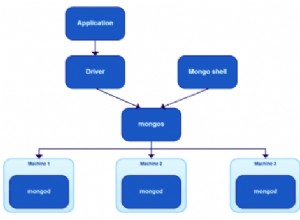duas dicas gerais:1.) não tenha medo de duplicar. Muitas vezes, é uma boa ideia armazenar os mesmos dados formatados de forma diferente em coleções diferentes.
2.) se você quiser classificar e resumir coisas, ajuda manter campos de contagem em todos os lugares. O método de atualização atômica do mongodb junto com os comandos upsert facilitam a contagem e a adição de campos a documentos existentes.
O seguinte é certamente falho porque é digitado do topo da minha cabeça. Mas melhores exemplos ruins do que nenhum exemplo eu pensei;)
colletion tweets:
{
tweetid: 123,
timeTweeted: 123123234, //exact time in milliseconds
dayInMillis: 123412343, //the day of the tweet kl 00:00:00
text: 'a tweet with a http://lin.k and an http://u.rl',
links: [
'http://lin.k',
'http://u.rl'
],
linkCount: 2
}
collection links:
{
url: 'http://lin.k'
totalCount: 17,
daycounts: {
1232345543354: 5, //key: the day of the tweet kl 00:00:00
1234123423442: 2,
1234354534535: 10
}
}
adicionar novo tweet:
db.x.tweets.insert({...}) //simply insert new document with all fields
//for each found link:
var upsert = true;
var toFind = { url: '...'};
var updateObj = {'$inc': {'totalCount': 1, 'daycounts.12342342': 1 } }; //12342342 is the day of the tweet
db.x.links.update(toFind, updateObj, upsert);
Obter os dez principais links classificados pelo número de tweets que eles têm?
db.x.links.find().sort({'totalCount:-1'}).limit(10);
Obter o link mais twittado para uma data específica?
db.x.links.find({'$gt':{'daycount.123413453':0}}).sort({'daycount.123413453':-1}).limit(1); //123413453 is the day you're after
Obter os tweets para um link?
db.x.tweets.find({'links': 'http://lin.k'});
Obter os dez tweets mais recentes?
db.x.tweets.find().sort({'timeTweeted': -1}, -1).limit(10);




